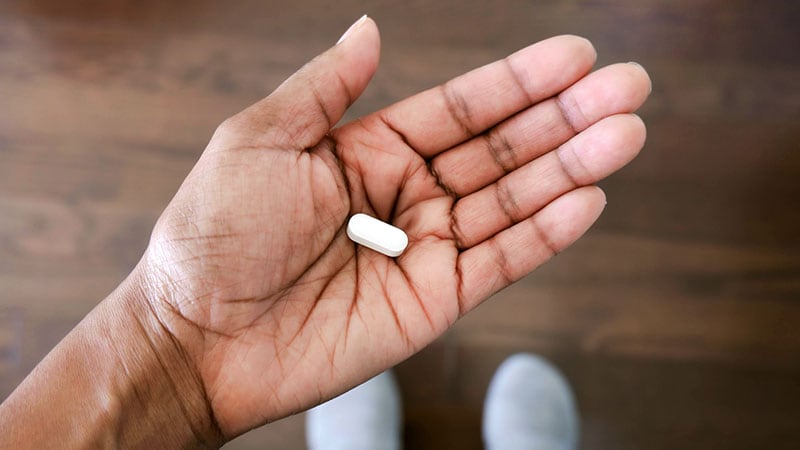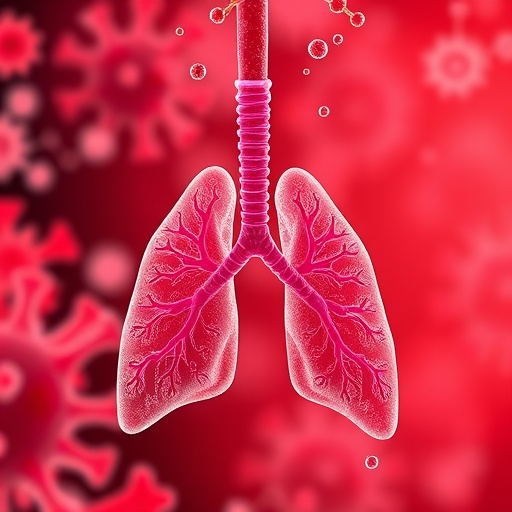Polypill Shows Promise for Heart Failure – Medscape

Report on the POLY-HF Randomized Trial: A Polypill for Heart Failure
Introduction
A recent randomized trial, POLY-HF, has demonstrated the efficacy of a polypill in improving treatment adherence and clinical outcomes for patients with heart failure. The study highlights a significant advancement in managing guideline-directed medical therapy, with profound implications for achieving global health targets, particularly Sustainable Development Goal 3 (Good Health and Well-being). By simplifying complex medication regimens, the polypill approach offers a promising strategy to enhance cardiovascular health, especially among vulnerable populations.
Methodology
Study Design and Participants
The investigator-initiated POLY-HF trial was a randomized study conducted at two centers in Dallas, Texas. It was designed to assess the effectiveness of a heart failure polypill compared to usual care.
- Participants: 212 patients with heart failure and reduced ejection fraction were enrolled.
- Intervention Group: Received a polypill containing three essential heart failure medications.
- Control Group: Received the same medications prescribed individually as part of usual care.
- Demographics: The study focused on an underserved urban population, with a significant portion facing socioeconomic challenges that directly relate to SDGs 1, 10, and 11.
- 68% were uninsured or relied on county-sponsored health programs.
- 42% experienced food insecurity.
- 32% experienced housing instability.
- The cohort included 54% Black and 33% Hispanic individuals.
Intervention Details
The polypill was produced through “over encapsulation,” where standard individual pills were placed into a single larger capsule. This method simplified production and did not require new pharmacokinetic studies.
- Composition: The polypill contained a beta-blocker (metoprolol), a mineralocorticoid antagonist (spironolactone), and an SGLT2 inhibitor (empagliflozin).
- Formulations: Four versions of the polypill were available, differing only in the dosage of metoprolol (10 mg, 50 mg, 100 mg, or 150 mg) to allow for titration.
- Cost: All guideline-directed medications were provided at no cost to participants in both study arms to isolate the effect of the polypill intervention.
Key Findings and Clinical Outcomes
Over a six-month follow-up period, the polypill group demonstrated statistically significant improvements across multiple primary and secondary endpoints compared to the usual care group.
- Improved Medication Adherence: Adherence, monitored via blood levels, was substantially higher in the polypill group (79.3%) compared to the usual care group (54.3%).
- Enhanced Guideline-Directed Therapy: A significantly greater proportion of patients in the polypill group achieved optimal doses of their medication at 1, 3, and 6 months (71% vs. 42% at 6 months, P
- Increased Left Ventricular Ejection Fraction (LVEF): The primary outcome, LVEF, showed a greater increase in the polypill group, with a statistically significant between-group difference of 3.4% (39.9% vs. 36.5%; P = .024).
- Reduced Hospitalizations: The polypill was associated with a 60% reduction in the combined outcome of heart failure hospitalizations, emergency department visits, and death.
- Improved Quality of Life: Patients receiving the polypill reported a clinically meaningful improvement in their quality of life, as measured by the Kansas City Cardiomyopathy Questionnaire (KCCQ), with an 8.5-point difference between groups (P = .005).
Implications for Sustainable Development Goals (SDGs)
The results of the POLY-HF trial offer a scalable model for addressing critical health challenges outlined in the United Nations Sustainable Development Goals.
Advancing SDG 3: Good Health and Well-being
The polypill directly supports SDG Target 3.4, which aims to reduce premature mortality from non-communicable diseases. By improving adherence and clinical outcomes in heart failure patients, this intervention enhances the quality of life and reduces the burden of cardiovascular disease, contributing to healthier lives for all ages.
Addressing SDG 10: Reduced Inequalities
The study’s focus on a diverse, underserved population with high rates of socioeconomic instability demonstrates a powerful approach to tackling health disparities. By simplifying treatment, the polypill helps overcome barriers to care faced by marginalized communities, thereby promoting health equity and aligning with the core principle of SDG 10 to reduce inequalities within and among countries.
Supporting SDG 1 (No Poverty) and SDG 11 (Sustainable Cities and Communities)
The intervention has clear links to poverty reduction and sustainable urban living.
- SDG 1: By reducing hospitalizations and simplifying medication management, the polypill can lower healthcare-related financial burdens on low-income individuals and families, preventing catastrophic health expenditures that push people into poverty.
- SDG 11: The study addresses the health needs of urban populations facing housing and food insecurity. Improving health outcomes in these communities is essential for building inclusive, safe, and resilient cities.
Conclusion
The POLY-HF trial provides the first randomized evidence for the efficacy of a heart failure polypill. The significant improvements in medication adherence, clinical outcomes, and quality of life underscore its potential as a transformative strategy in cardiovascular care. This approach is particularly valuable for achieving Sustainable Development Goals by promoting good health (SDG 3), reducing health inequalities (SDG 10), and supporting vulnerable populations in urban settings (SDG 1 & 11). Expert commentary suggests an urgent need for such bold approaches to overcome poor adherence to life-saving therapies, positioning the polypill as an attractive and scalable option for global health systems.
1. Which SDGs are addressed or connected to the issues highlighted in the article?
SDG 3: Good Health and Well-being
- The article’s central theme is the improvement of health outcomes for patients with heart failure, a major non-communicable disease (NCD). It discusses a clinical trial for a “polypill” designed to increase adherence to guideline-directed medical therapy, directly contributing to better health and well-being. The study’s success is measured by “measurable improvements in heart failure control,” including reduced hospitalizations and improved quality of life.
SDG 10: Reduced Inequalities
- The article explicitly states that the study’s “enrollment was focused on an urban population that is often underserved.” It details the socio-economic vulnerabilities of the participants: “68% were completely uninsured or relied on county-sponsored health programs,” “42% were experiencing food insecurity,” and “32% were experiencing housing instability.” By demonstrating a successful intervention in this demographic, the research addresses the challenge of reducing health inequalities for vulnerable and marginalized groups.
2. What specific targets under those SDGs can be identified based on the article’s content?
Target 3.4: Reduce premature mortality from non-communicable diseases
- This target aims to “by 2030, reduce by one third premature mortality from non-communicable diseases through prevention and treatment and promote mental health and well-being.” The article directly addresses this by evaluating a treatment strategy for heart failure. The polypill led to a “60% reduction in heart failure hospitalizations, emergency department visits, and death,” which is a direct contribution to reducing morbidity and premature mortality from this specific NCD.
Target 10.3: Ensure equal opportunity and reduce inequalities of outcome
- This target seeks to “ensure equal opportunity and reduce inequalities of outcome, including by eliminating discriminatory policies and practices.” The study’s focus on an underserved population with low baseline adherence to medication tackles the inequality of health outcomes. By providing a simplified and effective treatment regimen (the polypill) at no cost, the intervention helped close the gap in treatment effectiveness. The article notes that adherence in the polypill group reached 79.3% compared to 54.3% with usual care, demonstrating a reduction in the inequality of outcomes for this vulnerable group.
3. Are there any indicators mentioned or implied in the article that can be used to measure progress towards the identified targets?
Indicators for Target 3.4
- Mortality and Morbidity Rates: The article provides a direct indicator of progress by reporting a “60% reduction in heart failure hospitalizations, emergency department visits, and death” in the polypill group. This aligns with the goal of reducing mortality from cardiovascular diseases.
- Physiological Health Metrics: The improvement in Left Ventricular Ejection Fraction (LVEF) is a key clinical indicator. The article states there was a “statistically significant 3.4% in the polypill group (39.9% vs 36.5%).” This is a measurable indicator of improved heart function and disease control.
- Quality of Life: The article mentions the use of the Kansas City Cardiomyopathy Questionnaire (KCCQ) to measure quality of life, noting a “clinically meaningful” improvement of 8.5 points in the polypill group. This serves as an indicator for the “promote… well-being” aspect of the target.
Indicators for Target 10.3
- Medication Adherence Rates in Vulnerable Groups: The article implies an indicator for measuring reduced inequality of outcome by tracking medication adherence. The significant improvement in adherence in the underserved study population (“79.3% vs 54.3%”) serves as a quantifiable measure of improved access to effective treatment.
- Proportion of Patients on Optimal Therapy: The article notes that the “proportion of patients on guideline-directed medical therapy at optimal doses was significantly greater in the polypill group… (71% vs 42%)”. This demonstrates that the intervention helped this underserved population achieve a standard of care closer to that of more privileged groups, thus reducing an inequality of outcome.
4. Create a table with three columns titled ‘SDGs, Targets and Indicators” to present the findings from analyzing the article.
| SDGs | Targets | Indicators |
|---|---|---|
| SDG 3: Good Health and Well-being | Target 3.4: By 2030, reduce by one third premature mortality from non-communicable diseases through prevention and treatment and promote mental health and well-being. |
|
| SDG 10: Reduced Inequalities | Target 10.3: Ensure equal opportunity and reduce inequalities of outcome… |
|
Source: medscape.com
What is Your Reaction?
 Like
0
Like
0
 Dislike
0
Dislike
0
 Love
0
Love
0
 Funny
0
Funny
0
 Angry
0
Angry
0
 Sad
0
Sad
0
 Wow
0
Wow
0
















































:focal(1500,1000)/https://media.globalcitizen.org/a6/9a/a69a4720-d8a1-4715-b596-18738d03c05c/rotary_polio_hero_image.jpg?#)







/countries/sri-lanka/photo-credit---dmc-sri-lanka.tmb-1200v.jpg?sfvrsn=dc298bcc_1#)

















